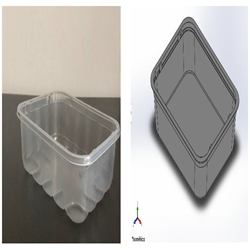Photosynthesis is a process whereby green plants use light energy to convert water and carbon dioxide, into oxygen and sugar. Sugar is transported throughout the plant and supplied to tissues like leaves, roots, flowers and fruits for growth. However, photosynthesis is an inefficient process; only 2-4% of the available energy in light is converted into new plant growth. Plants do not absorb all incoming sunlight due to reflection, respiration requirements of photosynthesis and the need for optimal solar radiation levels.
The rapid development of nanotechnology research has resulted in innovation for various applications including agriculture. Carbon Quantum Dots or Carbon Dots (CDs) for short, are a member of the carbon nanomaterial family. They are fragments of carbon less than 10 nm in diameter which are inert. Research interest has focused on CDs because of their superior properties; biocompatibility, photoluminescence and electron transfer ability. The versatility and advantages of CDs has sparked an innovation named 'Photosynthesis Enhancer' by our researchers.

This 'Photosynthesis Enhancer' contains the CDs, which is produced using bio-char (an organic charcoal). They have optical properties very similar to chlorophyll; which are the green pigments responsible for photosynthesis. When 'Photosynthesis Enhancer' solution is sprayed onto foliage, it penetrates leaves and interacts with chloroplasts (which contain chlorophyll). This interaction assists in the electron transfer mechanism of the photosystems, which leads to enhanced photosynthesis.
Through this innovation, photosynthesis rate increases between 20 to 80 percent depending on the types of crop. The CDs help to transfer electron during the photosynthesis process, which can directly increase the rate of photosynthesis rapidly. The technology is focused on accelerating photosynthesis rate that can yield a better harvest compared to other plant growth enhancers available in the market which focus more on plant nutrient requirements and root growth. The photosynthesis rate also reduces the use of light and water consumption during the photosynthesis process. This technology has potential to be used in indoor and vertical farming as the photosynthesis process can be supported under visible light, minimizing the need for expensive LED lighting.
This simple and green innovation helps to increase growth rate, shortens growth cycle, increases leaf growth and hastens flowering, fruiting as well as yield. Our researchers also diversify CDs applications in research such as solar cells and supercapacitors as well as various sensor systems. Its special electrical and optical properties help in the transfer of electrons that indirectly makes the process more effective. Hopefully more innovations can be produced in the future.
Assoc. Prof. Dr. Suraya Abdul Rashid
Head, Materials Processing and Technology Laboratory (MPTL)
Institute of Advanced Technology, UPM
E-mel: suraya_ar@upm.edu.my
Date of Input: 16/04/2019 | Updated: 06/08/2019 | nursyahirah
MEDIA SHARING
























